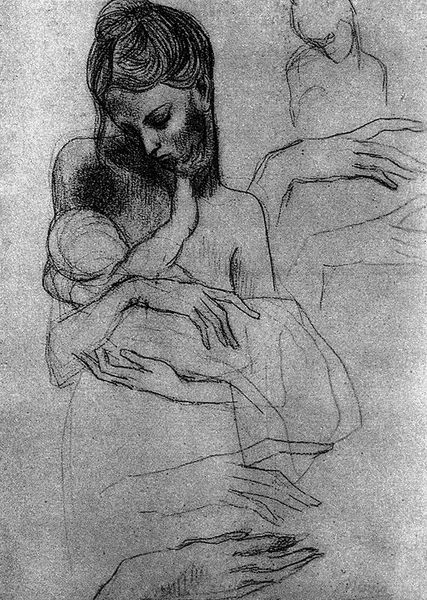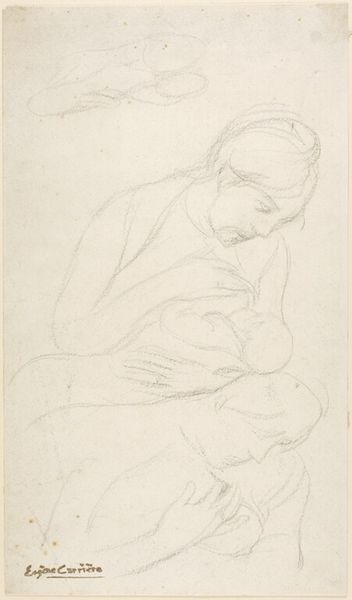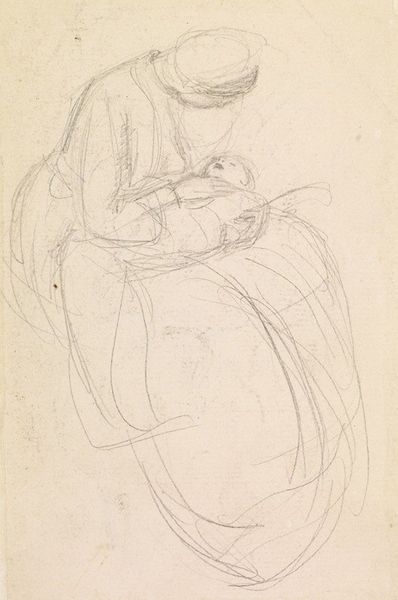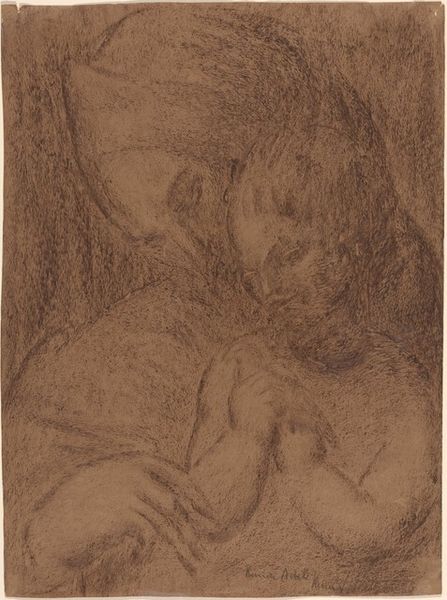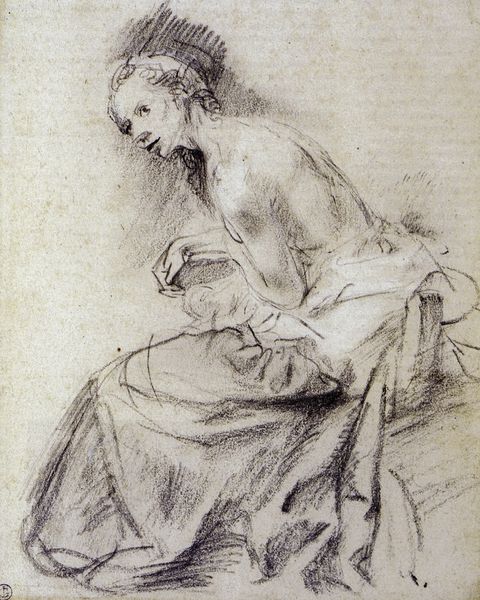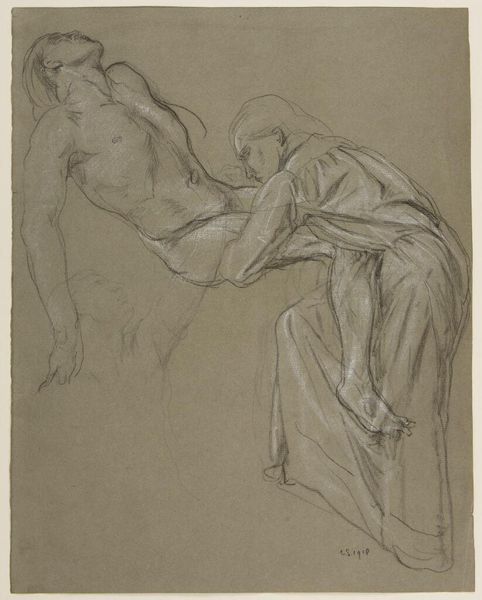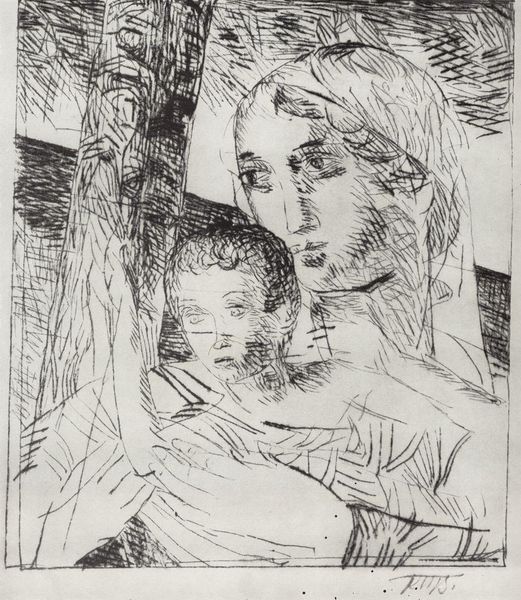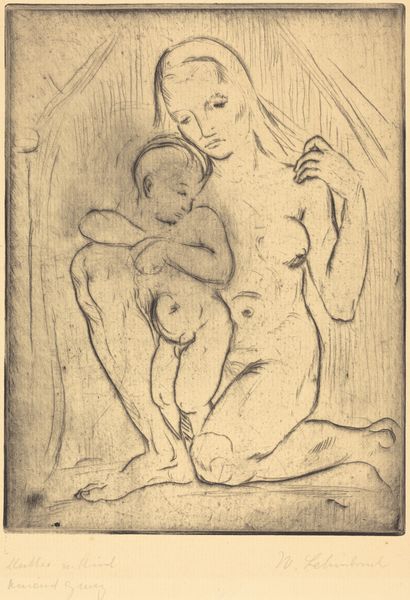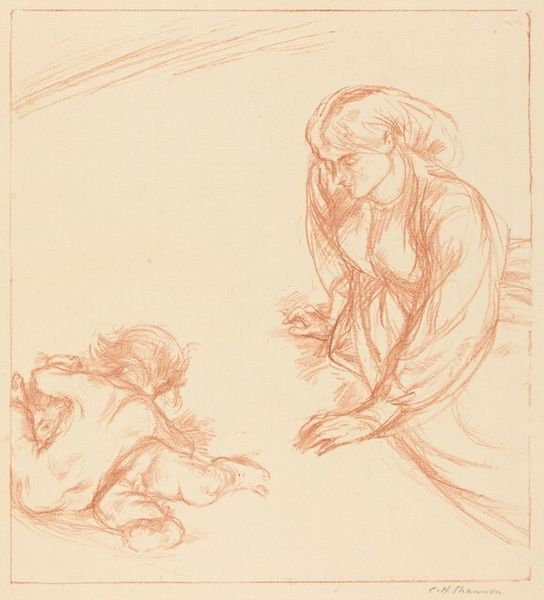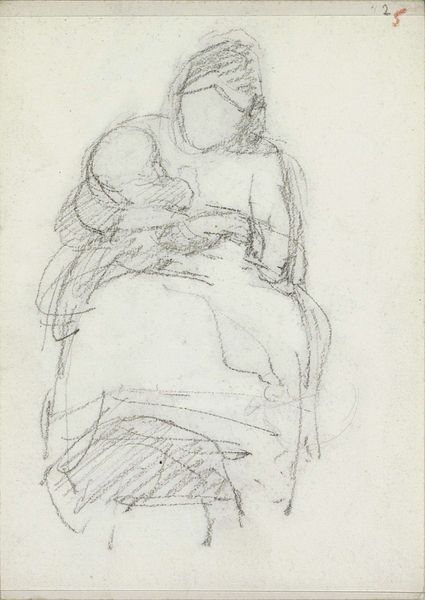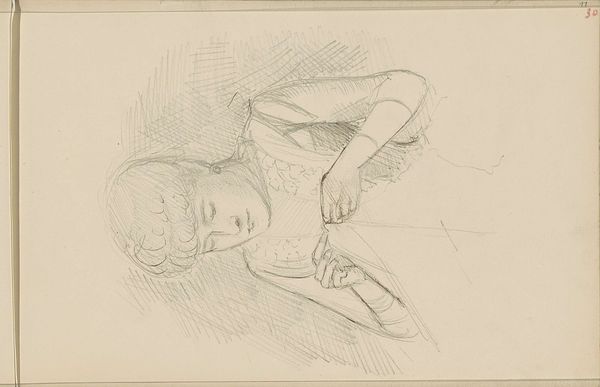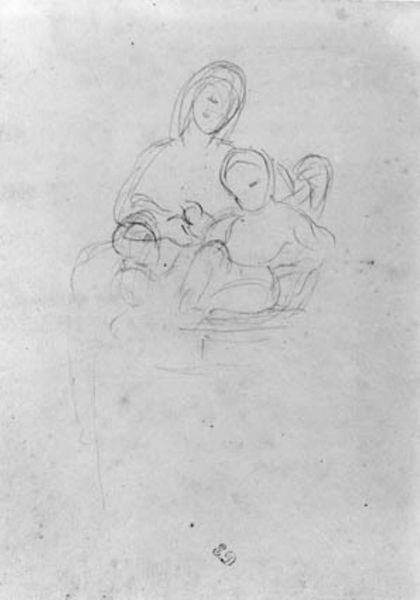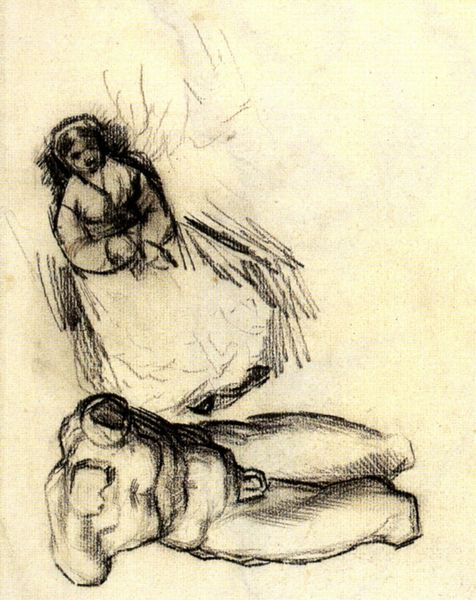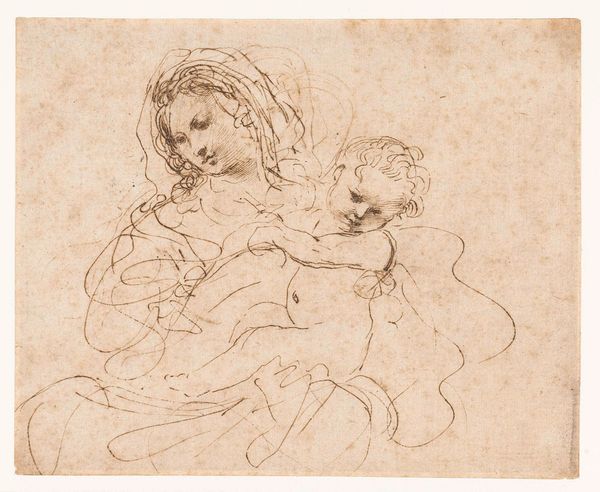
Copyright: Public domain US
Curator: Before us, we see Pablo Picasso's tender 1905 pencil and charcoal drawing, “Mother and Child.” It’s an intimate portrayal of the iconic Madonna and Child theme. Editor: The tentative, preliminary lines really grab me; it feels almost unfinished, leaving a residue of emotional vulnerability hovering in the air. Curator: Indeed, those unfinished sketches lend a profound sense of timelessness and universality. Picasso frequently used mothers cradling children as an enduring symbol representing the bond, nurture, and timelessness associated with it across cultures and generations. Consider, for example, depictions of Isis and Horus in ancient Egyptian art or the Virgin Mary and Child Jesus in Christian iconography. The posture of the child, cradled in the arms of his mother with the bowed head of the mother over the child suggests peace, shelter, love and safety. The visual vocabulary is deeply evocative and transcends centuries. Editor: You’re right. Though rendered in soft hues with Impressionistic or Early-Renaissance leanings, its universality really resonates. Look at how her downward gaze almost shields the child; it evokes that fierce maternal protectiveness women have historically been compelled to exert, especially under societal duress and patriarchal control. I see hints of past struggles but also resilient love. Curator: This interpretation acknowledges historical and social elements, which adds depth. To build on that thread, the act of drawing itself holds symbolic importance; it suggests gestation, conception, and origination. In this way, it parallels the genesis of life as well as of creative impulse itself, uniting motherly creation with artistic creation. Editor: Yes, exactly! Picasso likely knew this artistic lineage consciously or subconsciously, and as we witness social struggles that echo historical eras, its symbolic potential amplifies further; what we consider motherly today—as a social role—should embrace nurturing communities, promoting solidarity networks, dismantling structural inequalities—I see those layered potential in what might seem only initially as a traditional sketch! Curator: Ultimately, in looking at this moving drawing we confront the potency inherent within elemental, simple symbolic forms. Editor: For me, I think we also realize how art gives voices, perspectives, resistance across eras. This humble, yet powerful sketch stands as witness, reminding us to harness potential in small beginnings for far reaching transformation.
Comments
No comments
Be the first to comment and join the conversation on the ultimate creative platform.
